Frontier Sciences: ISHIKAWA Asano
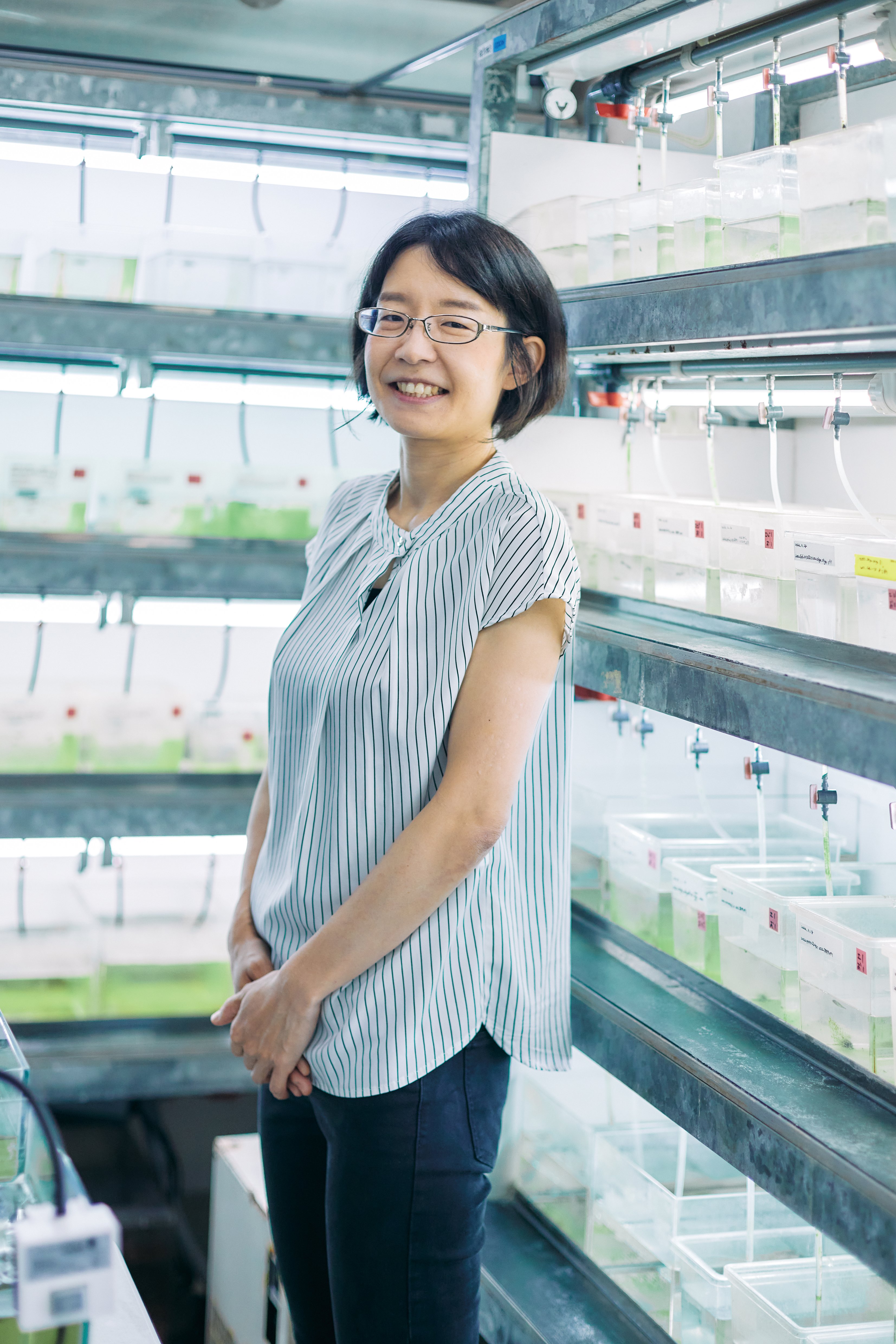
The natural environment that surrounds us is complicated and keeps changing. Organisms show a variety of shapes, behaviors, and life histories as if they naturally fit into their habitats. What mechanisms in an organism’s development, physiology, and nervous system lead to such diversification? What types of genetic variations cause these alterations, and how many are there? Are there common molecular characteristics? The answers to these questions may show us how much of organism evolution and diversity is free or limited.
It is important to analyze how the genetic variation that causes evolution and diversity behave within the ecosystem, in addition to the questions mentioned above. Genetic variations that cause biodiversity have been identified bit by bit in recent years. However, little is known about how genetic variations occur and spread within the ecosystem.
It is shown that genetic variation can impact the ecosystem itself through interspecific interactions. This implies that to fully comprehend the mechanism of how genetic variations occur and are maintained in the natural environment, we must delve into the function of genetic variations that cause evolution at the individual and molecular levels, as well as the dynamics within the ecosystem, the impact on the ecosystem, and its feedback between the evolution and ecosystem.
Therefore, I am trying to clarify the mechanism of adaptive evolution that causes the diversification of organisms from both molecular and ecological aspects by using analytic techniques from a broad range of scientific fields, from microbiology to macrobiology.
The three-spined stickleback (Gasterosteus aculeatus) and its related species are model organisms that may provide answers to these questions. The stickleback is a tiny fish that inhabits the northern hemisphere. Since the ice age, they have colonized freshwaters in various regions across the globe and have rapidly diversified into distinct populations with different features in shape, color, behavior, and life history. These populations of sticklebacks can hybridize, allowing the detection of genome regions and genes that cause the different features.
Moreover, we can alter the stickleback gene by gene recombination technology and genome engineering technology. These technologies enable us to directly observe their functions of the genetic variations and examine to what degree they are advantageous for survival and reproduction. My goal is to elucidate the molecular and ecological mechanisms that control organisms’ adaptive evolution by (1) finding genes and/or genetic variation candidates that are responsible for diversification in the natural world; (2) clarifying their molecular functions, effects on fitness, evolutionary origin, and influence on the ecosystem; and (3) defining their generality.
More specifically, I am focusing on the following subjects:
1. Molecular Genetic Mechanisms Responsible for the Diversity of Life Histories
Organisms are born, grow, migrate, and breed, adapting themselves to changing environments, such as seasons. Changes in the life history affect the degree of adaptation and lead to further diversification. Thus, I will elucidate the molecular mechanisms, effects on degree of adaptation, evolutionary origins, and influence on ecology by identifying the genes and genetic variations responsible for the diversity of life histories.
2. Molecular Genetic Mechanisms that Control the Ability to Advance to a New Environment
Some organisms repeatedly advance to new environments and diversify; others do not. Thus, I will identify the key genes responsible for this difference.
3. Genetic Mechanisms that Make Gene Expressions and Responses and Chromatin Structure* Different, and their Functions in Adaptive Evolutions
NOTE
*Function of chromatin structure: Chromatin structure not only physically protects genomic DNA but also decides, which part of DNA to copy and when.
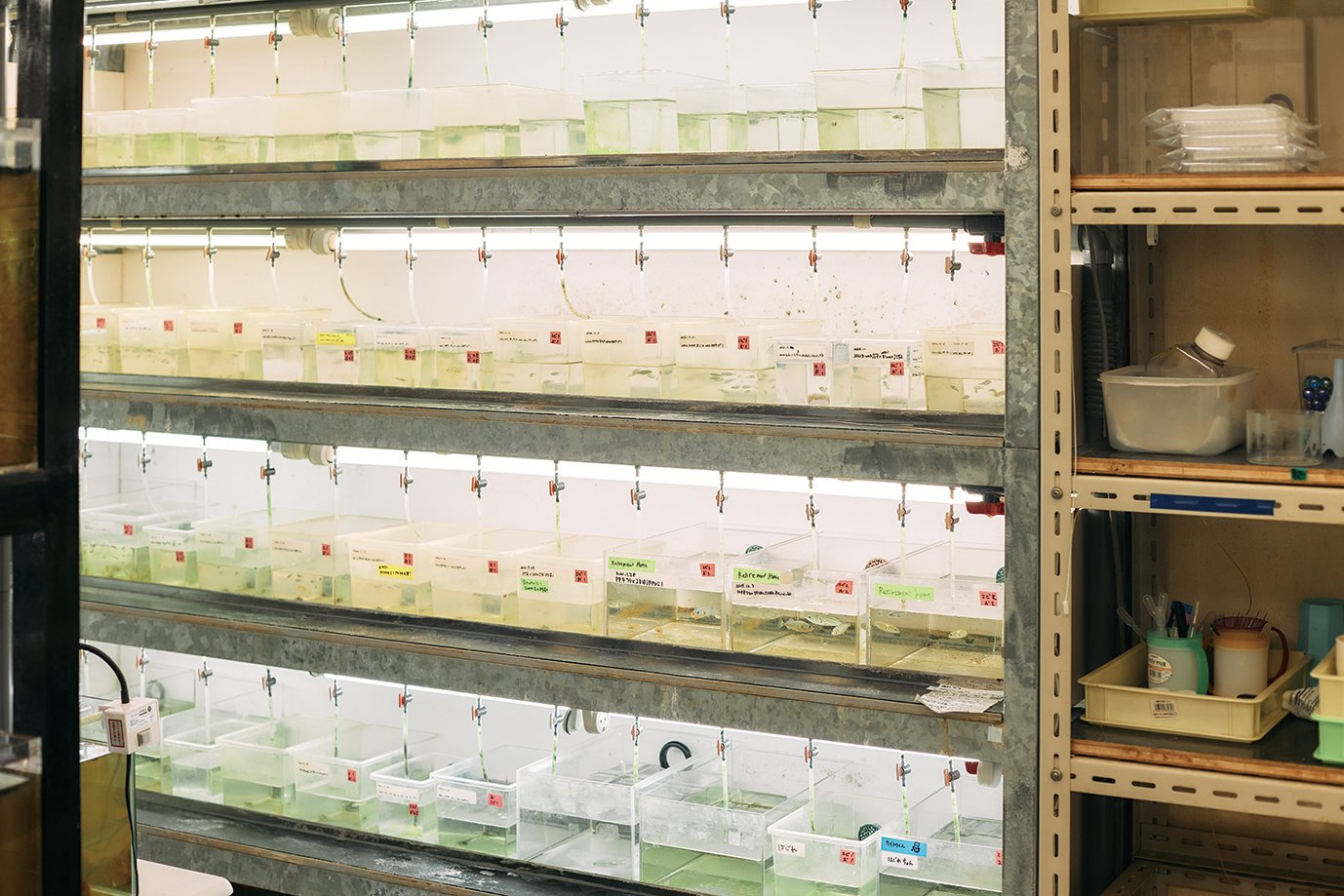
Ishikawa’s stickleback breeding system:
Artificial insemination of fry from all over the world occurs here.
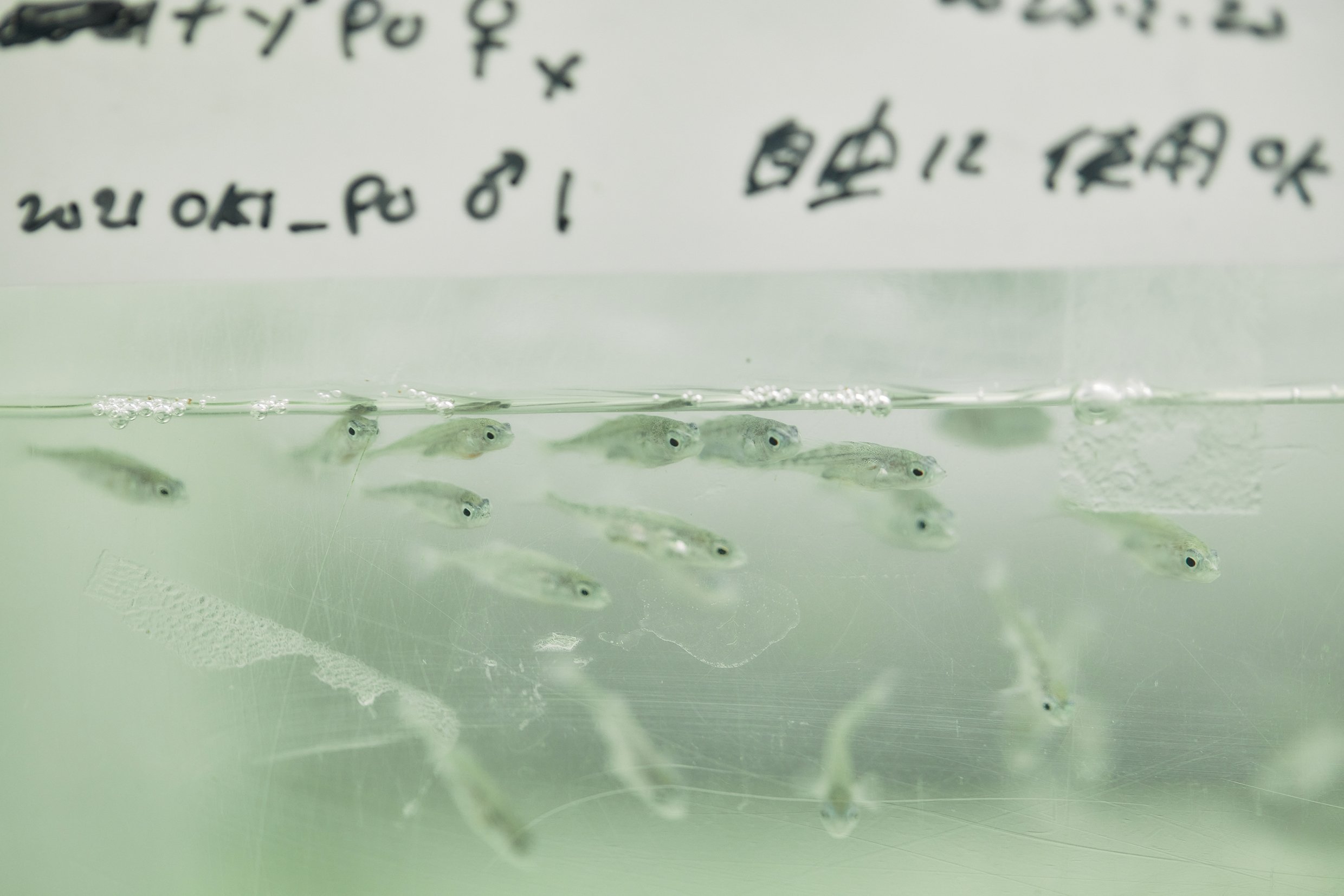
Sticklebacks are not afraid of people.
They come closer when people approach their tanks, expecting to be fed.
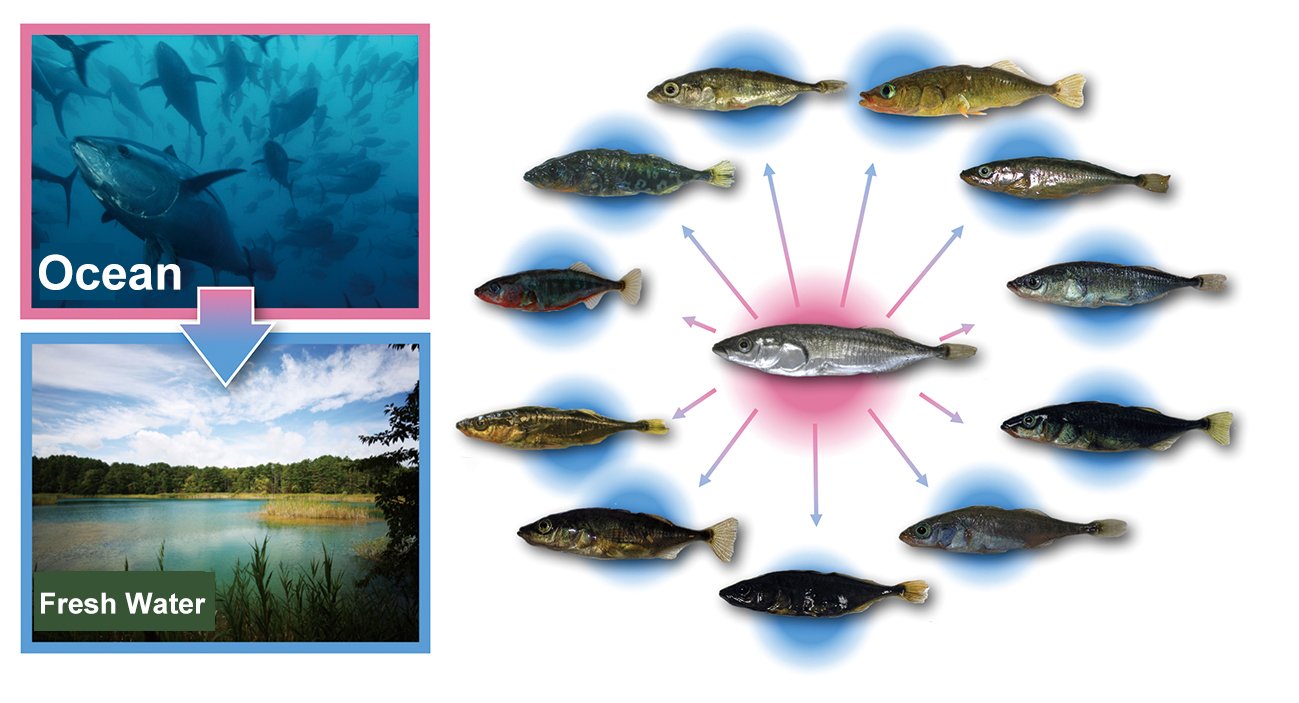
Sticklebacks’ colonization in fresh waters and diversification
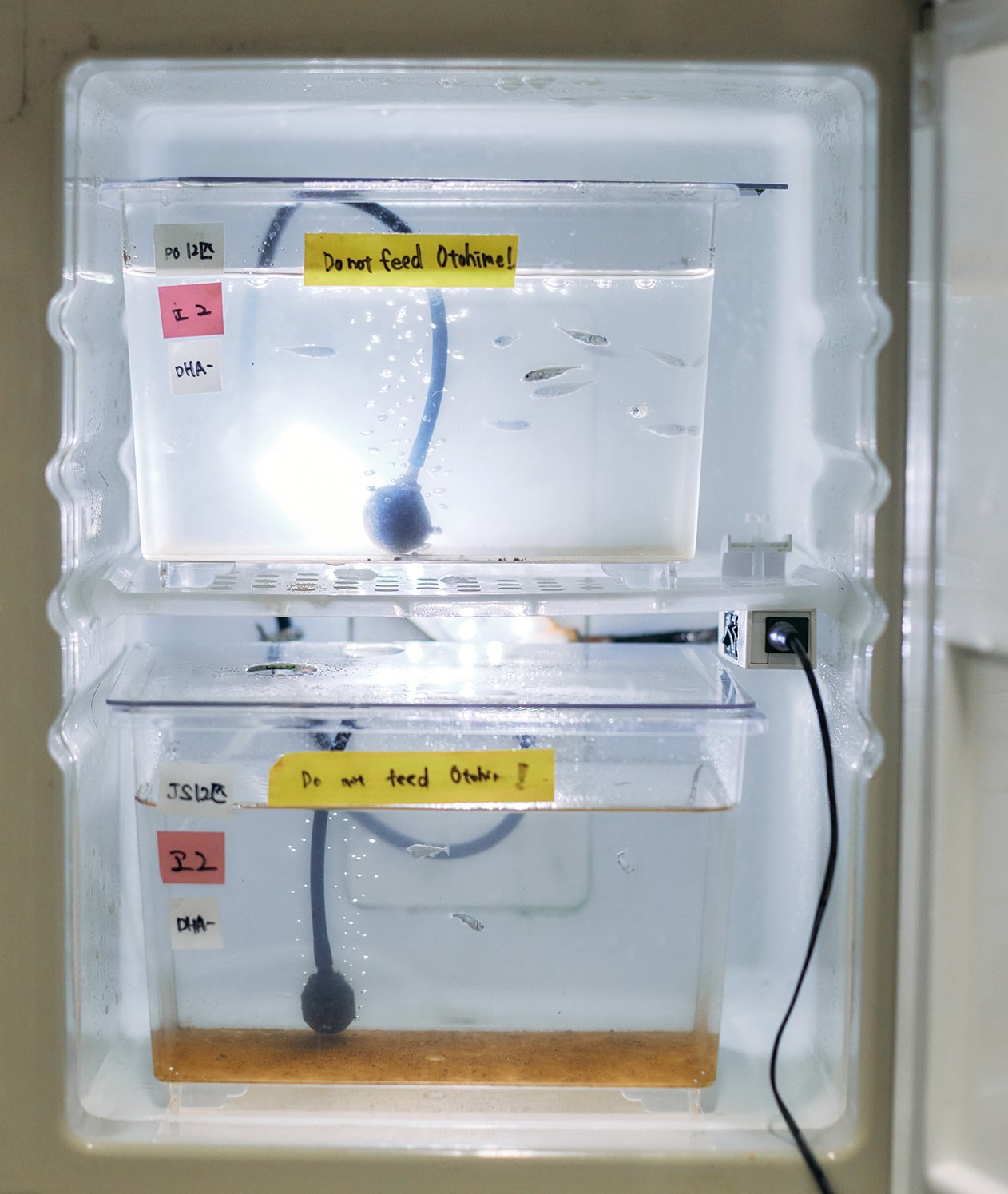
Sticklebacks can be bred in a small incubator.
Ishikawa breeds them with different environmental conditions in compact incubators.
Asano Ishikawa
Associate Professor, Department of Integrated Biosciences
Division of Biosciences
https://sites.google.com/view/asanoishikawa/home?authuser=0
vol.42
- Cover
- What We Can Learn from the Frontier of Evolutionary Biology
- My Dream Is to Create Energy for the Perpetual Survival of Humans
- Interdisciplinary Approach to Molecular and Ecological Sciences to Unravel the Secret of Biodiversity
- Science for Balancing Biodiversity and Human Needs
- GSFS FRONTRUNNERS: Interview with an entrepreneur
- Voices from International Students
- ON CAMPUS x OFF CAMPUS
- EVENTS & TOPICS
- Awards
- INFORMATION
- Relay Essay
